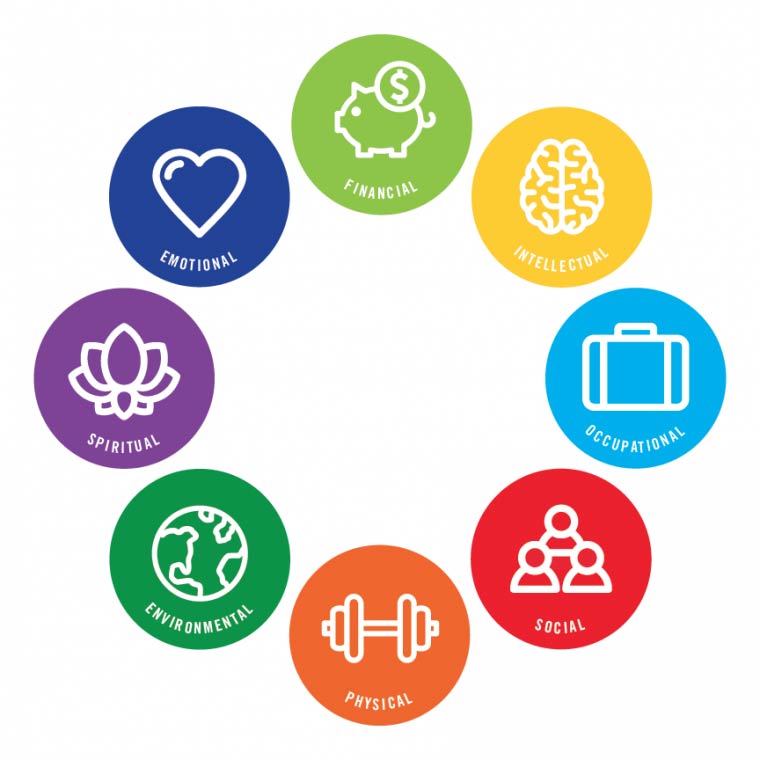How Do You Improve Employee Experience?

With Gil Cohen, Founder of Employee Experience Design
What is Employee Experience?
Employee Experience Definition: Employee Experience (EX) is the sum of all interactions a person has as a result of their job.
Defining Employee Experience
Every touchpoint a person has with a company is a part of their EX. In addition, each piece of technology and every app a person uses is also a part of their EX.
The Employee Experience is always happening to everyone involved.
Ultimately, it’s not just one moment, but the combination of the entire journey a person goes on.
The biggest input into EX is managers, not HR. In short, people are the business and it’s the experiences that people have that eventually lead the company to its desired results. That’s why it’s essential to understand ways to improve the employee experience to set your business up for long-term success.

Employee Experience Comprises Myriad EX Factors
Every single day we have interactions with our job that factor into our experience.
Everything from our commute or the chair we sit in, for example, all the way to our manager’s demeanour impacts us. To sum up, each of these are called EX Factors that influences how we feel about our job and contributes to the overall employee experience.
By acknowledging these EX Factors, businesses can begin to build an effective employee experience strategy.

The Role of Onboarding in the Digital Employee Experience
EX Factors throughout a person’s journey combine, consequently forming the Employee Lifecycle.
The Employee Lifecycle consists of five main stages, some of which overlap. This path along the employee’s journey starts with the Employer Brand until they apply for the role.
Meanwhile, the individual also starts the Onboarding part of the journey. Because the hiring process is an opportunity for the company to set and live up to expectations, this is the start of the connection with the organization.
Finally, onboarding ends when the employee feels comfortable and productive.
In their research, Glassdoor discovered that a strong onboarding process can improve productivity by more than 70% and retention of new hires by 82%.
However, most organizations focus on either paperwork or short-term thinking with their onboarding. Therefore, people build less of a connection with the company.

The company needs to be ready for newcomers and actively include them to reap the benefits of the employee experience in a positive way.
Day one in a new job is a moment that matters. So, it’s key to help the person by smoothing out their transition.
Almost ⅓ of new employees start to look for a job within the first six months in the role, with up to ⅕ turning over in the first 45 days.
In comparison, having a structured onboarding experience for new employees being 58% more likely to be with the company three years later. Onboarding is one of the first touchpoints to improve the workplace experience. Plus, it’s significantly less expensive to create a strong onboarding program to retain employees than to continuously hire, onboard, and train new hires.
Workforce and Human Experience
The Human Experience (HX) at work is the individual side of EX. The factors vary by person, so responses to EX are different for everyone.
On the other hand, Workforce Experience is the macro view of the Human Experiences that people are having at work.
All experiences are filtered through expectations. For instance, the digital employee experience that is becoming increasingly more common thanks to remote work can be drastically different from hybrid teams and those in the office full time. This is just one example of how the employee experience can be unique for every individual.
Furthermore, managers and each team member bring expectations. It’s up to the manager to ensure there is no gap between them to bridge. This is one of the reasons that managers have such an impact on EX.
Our workplace experience impacts us as humans through our Eight Dimensions of Wellness.

There’s a long list of EX Factors that impact each Dimension. Also, the importance of each Dimension changes over time.
The impact of a person’s wellness can be seen in their physical and mental health, as well as their financial stability.
In conclusion, the EX isn’t what the company thinks it is or wants it to be: It’s what the individuals within the company are actually experiencing compared to their expectations.
Why does Employee Experience matter?
Each individual has a different experience that is constantly changing. Importantly, this drives the emotions a person feels towards the company and their work.
These emotions are unavoidable and can have a dramatic impact.
There are two main streams that answer the question of why EX matters:
1) Organizational
To sum up, EX determines organizational outcomes.
The benefits of the employee experience can touch everything including employee retention and productivity, which undoubtedly impact a business’s bottom line.
It’s fundamental to see that people are the organization and it is their behaviours that create all outcomes, including profit and growth. Prioritizing a great employee experience is a part of every successful business.

2) Individual
The individual impact of EX varies, but the amount that a person’s wellness is supported by their experience with their employer will determine many outcomes, including physical and mental health.

In short, the reality is that EX is impacting these vital outcomes whether you design for it or not.
The Benefit of Improved EX to the Organization

Above all, it’s important to differentiate between Employee Experience and Employee Engagement.
They are not the same thing. Every employee has an experience, but not every employee is engaged. Experience is what every employee is having at all times, however, engagement is the level to which the employee feels connected to their work and company culture day to day.
People are engaged with their work when they feel connected with both the work being done and the company. Engagement is important because it elicits discretionary effort from employees. On the other hand, high engagement also can put people at risk of burnout.
Discretionary effort from engagement is only one of the behavioural outcomes of EX.
Other outcomes of EX include trust, job satisfaction, retention, and performance, among many others. Clearly, creating a positive employee experience is extremely beneficial.

Three key EX Factors in ensuring that a person is enabled are clarity, resources, and alignment.
1. Clarity
Above all, everyone needs clarity.
Without it, we’re limited in our productivity because we won’t know if what we’re doing is the right choice, consequently affecting our results.
Additionally, having a clear set of expectations also allows employees to align their own expectations, ensuring a smoother experience. Prioritizing transparency and communications helps create a workplace culture built on trust.
2. Resources
Without the tools or resources for the job, no one can be successful. When you implement an employee experience strategy, ensure you’re providing your team with resources and learning materials they need to excel in their position in learning opportunities to support career advancement.
3. Alignment
A person needs to be aligned with the team and the organization for the work environment to be productive. Ensure you have internal communication plans in place to keep employees connected.

Retention and satisfaction
What affects retention are not always the same as the things that impact engagement.
The EX Factors that impact retention can broadly be split into two categories: those that cause job satisfaction and those that cause job dissatisfaction.
Work by Gallup has supported the Motivation Theory of psychologist Fredrick Herzberg and its two factors of satisfiers and dissatisfiers. They’ve identified twelve questions that provide a framework for determining high-performing individuals and organizations.
These questions align in a very clear way with a differentiation between EX Factors that lead to satisfaction vs. dissatisfaction.
Ultimately, because these factors are individual, it’s up to the organization to determine which EX Factors matter to your employees and business leaders.

Customer experience (CX) and EX
For many companies, CX is where the rubber meets the road.
That is to say, a tremendous amount of emphasis has been placed on CX for more than a decade.
Much like all of the other organizational outcomes of EX, the CX your employees provide depends on the HX they are living every day.
The EX Factors that lead to a great CX are those that drive two main reactions from employees: purpose and engagement:
Purpose
They need to understand that their role is to add value to customers. When that mentality is ingrained in people, the decisions they make will be aligned with great CX.
Engagement
One of the benefits to the company of an engaged employee is that they bring more energy to the work they do and more value to the customer. Engagement will lead to an employee who is more persistent and more dedicated to adding value to the customer experience.
What are the Benefits of Improving the Employee Experience?

While the benefits to the organization are measured by the specific needs of the company, the benefits to the individual are measured in their quality of life.
For each individual, there might be different emphasis placed on different aspects of their life. However, EX Factors ranging from compensation to ergonomics to their manager will impact the quality of life they are able to lead.

A study by Morneau Shepell found that the level of mental health support an employer provides impacts their employees’ mental well-being.
It’s up to the leader to create an environment where people have supported mental health.
Also, uncertainty and volatility have negative impacts on mental health. While they are inevitable, any limiting of complexity for employees benefits their mental health.
By providing transparency and a vision of the future state, leaders are able to help ease the inevitable concerns about work that come up in a VUCA (Volatile, Uncertain, Complex, and Ambiguous) environment.

Morale
Morale is the combined mood/feelings of the team and company.
The morale of the team is often tied to the teamwork that is lived among them, as well as their incentives.
For a positive atmosphere and feeling among the team, people must feel connected with one another. This includes the ability to trust one another with regard to the work being done. In addition, having teamwork across groups increases the feelings toward one another. Teamwork is a broad term, but it is one that increases the morale of the group.
Incentives need to be aligned with the needs of employees and of the company.
This is not about monetary or even tangible incentives. If a person’s incentive is an accomplishment, or growth/development, it isn’t just about what you give them.

Satisfaction
As mentioned, the EX Factors at work can be divided between those that impact satisfaction vs. those that impact dissatisfaction.
Motivators are aspects of work that cause positive feelings in relation to the work. For example, think of achievement, recognition, growth, and advancement.
Satisfaction within the role provides benefits to both the individual and the company. Increasing Motivating factors and decreasing dissatisfiers will lead to Job Satisfaction.
How Do You Improve Employee Experience?
Now that you understand the ins and outs of EX, you might be wondering how to improve the employee experience in your company. While there’s no one-size-fits-all approach to improving the employee experience, there are some tried and true steps you can take.
Employee Experience Strategy

The Role of Expectations in Your Employee Experience Strategy
Setting Expectations
The organization must create clear expectations for all individuals. With a lack of clarity, people will fill in the gaps with their own opinions and biases. Leaders must be clear with their expectations and then walk the talk. Without modelling the right behaviours, expectations will be muddied.
Clarifying Expectations
Each individual will have their own expectations brought from biases and past experiences. Leaders need to make sure that everything is understood – both ways – and clear to help employees work efficiently.
Adjusting Expectations
At different times, employees adjust their expectations. Leaders will also need to adjust as needed.
Because expectations are individual, EX is going to vary from person to person.
Building clarity with all individuals will ensure expectations are aligned.
The Impact of Employee Experience
The value in understanding Employee Experience is in learning how to improve it in order to create better outcomes.
Much like how both hunger and lack of sleep can present themselves with the same symptoms, the EX perspective focuses on the root causes of an issue.
For instance, a common symptom in many organizations is fallout from silos within an organizational structure. As a result, the Employee Experience comes through in the human form: People end up not sharing information, or worse, working against each other.
Ultimately, when this happens engagement scores will suffer, but will not provide a clear indication of the root cause of the issue.
An example of the impact that Employee Experience has on the workplace experience is when leaders’ actions and words aren’t aligned. Any discrepancy between the Covert and Overt culture is hurting your company.
The difference between what leaders say and what they do is a major motivational factor for people.

Every time a leader acts in a way that is inconsistent with the Overt Values, they are earning more cynicism from their people. As a result, this cynicism will demotivate people while also blocking change efforts.
Leaders need to ensure there is alignment between what they say and what they do if they want to lead. So, if the Covert and Overt cultures are different, EX will include significant frustration.
Improving Employee Experience Through Best Practices
“Expect what you accept.”
Specific best practices will vary from company to company. However, in order to create a great EX, it all needs to start with intent.
If leaders don’t consider EX as they make organizational decisions, they’ll let bias and expedience define it.
There are three Best Practices that will boost EX efforts:
1) Build Psychological Safety
Definition: Psychological safety is a belief that one will not be punished or humiliated for speaking up with ideas, questions, concerns or mistakes. -Amy Edmondson
A few years back, Google embarked on Project Aristotle to understand teamwork and productivity. After research, they learned that psychological safety was the single most important factor into the effectiveness of a team.
In conclusion, they found that “in a team with high psychological safety, teammates feel safe to take risks around their team members.”
The reality is that psychological safety is something that’s created by leaders and lived by teams.
2) Build Empathy Into the System
Empathy isn’t traditionally built into the way modern organizations work.
Leaders need to make sure they are making people decisions using information beyond just the narrative in their head. By integrating empathetic responses, they’ll better understand the factors their people value.
3) Manager Training
“People don’t quit a job, they quit a boss.”
Everyone knows some form of the saying above. Gallup has recently studied the factors that impact remote productivity and their findings came down to one role: The manager.
Being a manager is a role that is new and requires different skills than being an individual contributor. It’s about setting others up for success in their roles, not just being competent at your job.
Companies cannot expect front-line workers to be successful when their respective managers aren’t enabled. In addition, this includes helping new managers.
Get a Free Demo of iTacit’s Employee Experience Management Platform today.
About the author
Gil Cohen has been helping organizations with Talent Management and Employee Experience for over 20 years. He has a passion for helping companies design employee experiences that improve both the outcomes of the organization and the lives of its employees. Gil’s combined background in psychology and business helps him understand both the individual and organizational aspects of the workplace.








